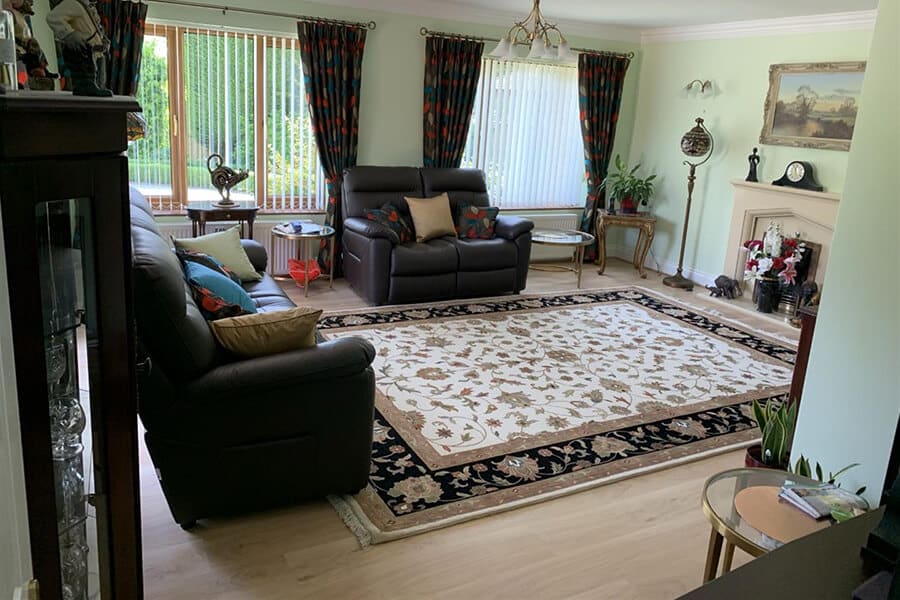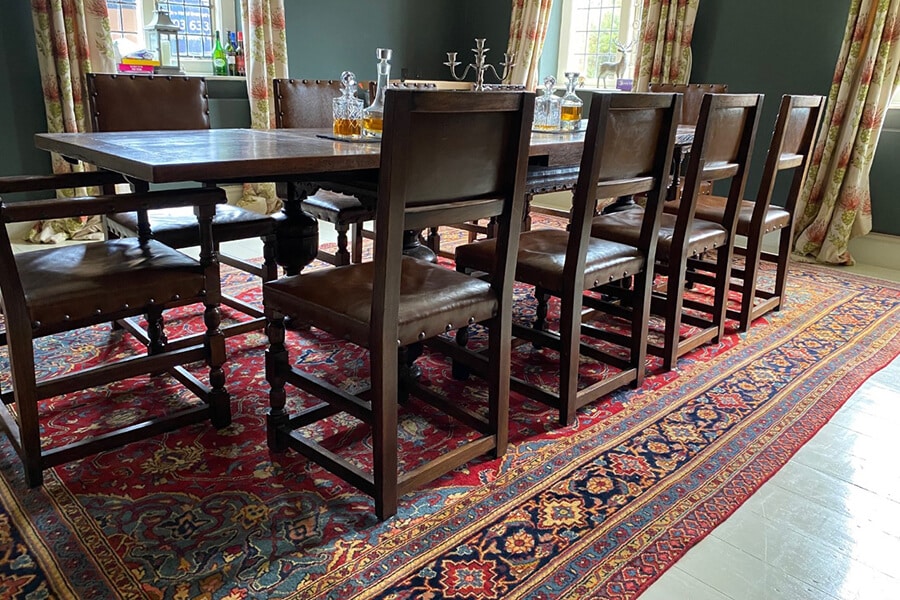A genuine Persian rug is more than just a floor covering. Persian rugs have been woven for centuries using traditional skills and craftmanship passed down over time. Choosing a Persian rug should be an enjoyable experience and this guide is designed to help you find the perfect rug.
Whether you are looking for a statement piece for your living room, a touch of elegance in your dining room or something more practical in a hallway or kitchen there is a Persian rug made for the job. With a little help and advice from us you can be sure of finding the right rug at the right price – something that will bring you joy for many years to come.
Persian Rug Sizes
In my experience most rooms or spaces can take at least 2 or 3 different sized rugs and still look right. Persian rugs come in a wide range of sizes from small pieces to put in front of a fireplace to hall runners, right up to large room sized rugs – we stock pieces as big as 16 feet (4.90 metres) long!
Using our Home Visits Service you can choose a range of sizes and designs, making your final selection in situ. The required size of any rug can vary due to room size, existing floor covering and intended use. For example, a rug may be placed on a fitted carpet to add colour or warmth whereas a larger rug would be needed on a hard floor to bring warmth and to reduce echo.
Some people prefer to put furniture on to a rug, some people prefer the furniture to be off and some part on part off – the choice is down to your own preference. Take a look at our ‘Be Inspired’ page if you are unsure. Here you can see examples of these alternatives and decide which you prefer.
If you are visiting our showrooms please bring with you the size of your room and/or intended space, from there we will be able to guide you.
Persian Rug Patterns
Of the many types of handmade rugs available Persian rugs probably have the widest variety of designs and patterns. From detailed, classical, city weaves, to the symbolism of Persian tribal weaving – the choice is almost infinite. Much like a picture or painting, a rug should be chosen because it appeals to you, after all it is built to last a life time and you will always be able to roll it up and take it with you when you move house.
The designs in some larger Persian rugs are reminiscent of Persian Gardens, some feature tree of life patterns, some tribal rugs have symbols and trees or animals woven in to them often depicting a certain meaning or reference. Some have central medallions, some feature Boteh designs – a kind of stylised fish shape believed to be a forerunner to the Paisley design we see today.
Knot Density and Pile Height
It is a common myth to think that a thicker rug must be a better quality rug. This is simply not the case. Some of the finest rugs I have seen have been some of the thinnest. Knot density (how many knots to the square inch) and materials used will have a huge bearing on both quality and price and nowhere is this more true than with Persian rugs. Some of the finest rugs in the world emanate from Iran. Cities like the holy city of Qum, Isfahan and Nain are known to produce some of the finest weaving anywhere in the world, whereas some tribal rugs will feature fewer knots per inch but a much deeper pile thereby ensuring longevity, but with a very different touch and feel.
Persian Rug Materials and Dyes
The vast majority of rug production from Iran is woven using wool for the pile and cotton for the foundation. The majority of Persian Tribal weaving will feature wool for the pile with a wool foundation. The very finest pieces will feature a fine silk pile with either cotton or silk for the foundation.
The majority of dyes used are chemical however lots of Persian weaving will feature natural dyes – especially some older rugs woven pre 1920. Natural dyes are made using plants, berries, fruit, bark and roots as well as flower petals and even cochineal beetles.
Conclusion
The name Persian is synonymous with handmade, hand-knotted rugs. Indeed many people refer to any kind or type of handmade rug as a Persian Rug or Persian carpet, when strictly speaking this may not be true. However, rug weaving has been a tradition in Iran and throughout the Persian Empire for many centuries. Indeed one of the earliest known rugs, the Pazyryk Carpet has been carbon dated as being woven in the 5th Century BC.
Whilst there are many types of rugs woven in many countries throughout the world, it is fair to say that many of the finest rugs ever woven will have their origins in Persia.


